I had the privilege of attending the 2023 World Usability Congress, where I immersed myself in a series of captivating talks delivered by renowned speakers. One particular keynote that left a lasting impression on me was “Beyoung UX: The Truth About Digital Product Success,” presented by Russ Wilson from Google Cloud. Wilson’s presentation was a thought-provoking exploration of the factors that underpin the success of digital products.
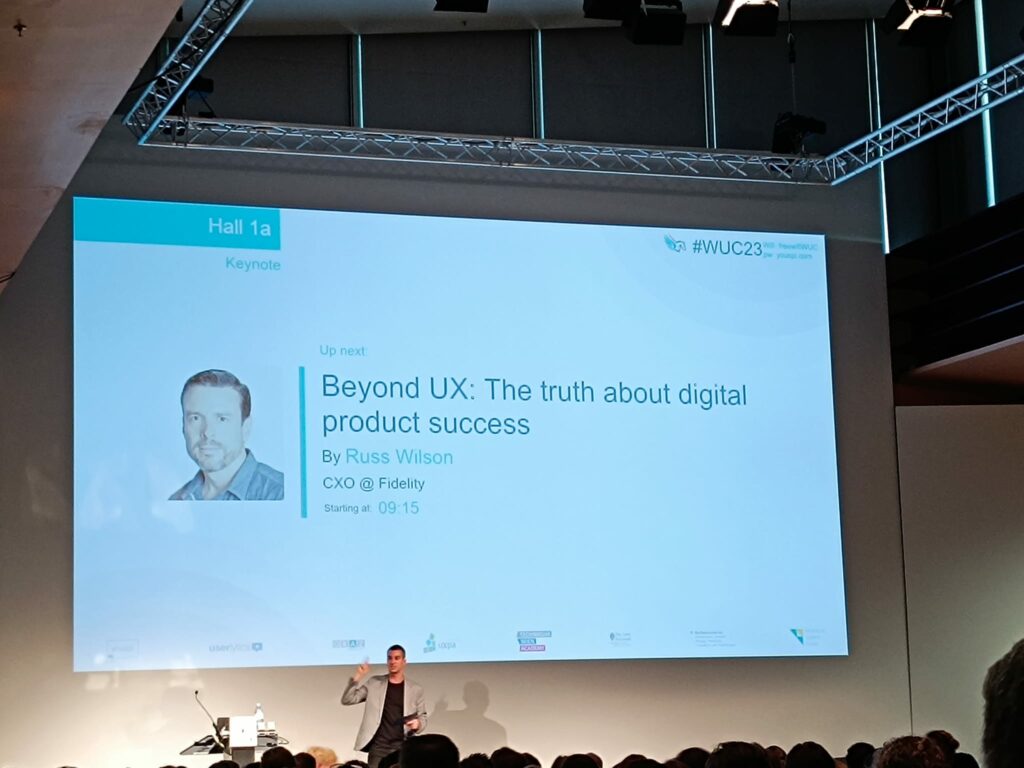
At the heart of his keynote was a unique approach, a sort of guided quest through a series of thought-provoking questions. For instance, he delved into what truly makes people fall in love with a product and what ultimately defines a product’s success. To illustrate his points, he shared an anecdote about his boss sending him an article about a well-funded startup that meticulously followed every established best practice in user research, prototyping, experimentation, iteration, and design to create a beautiful product. Despite their thorough efforts, this startup met with failure. This prompted Wilson to ask, “What went wrong?”
In his pursuit of understanding digital product success, Wilson conducted interviews with 300 individuals (can’t remember the exact number) over the years, posing a fundamental question: “What is the single most important factor that leads to a digital product’s success?” While acknowledging the significance of aspects like personalization and adaptability, he made a crucial distinction. He argued that these aspects, although important, are secondary. His compelling conclusion was that success primarily hinges on differentiation – the ability to offer something unique or perform better than any other product in the market.
He urged us to consider products that excel in a way no other option can match. These products, initially, had strong differentiators that set them apart, whether it was offering something no one else did or excelling in a particular aspect. As competition inevitably emerges, they continue to seek fresh ways to differentiate, whether through superior performance, reliability, branding, pricing, or exceptional service.
Digital products face unique challenges that set them apart. Their ever-changing nature means that traditional rules of architecture and industrial design often don’t apply. Moreover, technology evolves at an unprecedented pace in the digital realm, faster than any other medium. This rapid evolution presents a distinct challenge, as anyone can leap into the scene and introduce something entirely new.
So, what is the strategy for success in the digital world? Wilson emphasized that perfection is an unattainable goal. Customers and the market have been conditioned to expect rapid results and little patience. Hence, achieving perfection is not a viable strategy.
Wilson proposed a pragmatic approach to success, one that challenged conventional notions of good UX. He argued that, from a business perspective, it’s not about making a product aesthetically pleasing, but rather about how it differentiates itself. In the competitive digital landscape, standing out through a unique and meaningful user experience, not just visual appeal, is the key to success.
Additionally, I had the opportunity to attend several other enlightening talks during the World Usability Congress.
Impulse #3:
Andraea Picchi from Kroo Bank delivered a talk titled “The Contextual Nature of Design Leadership.” One key takeaway was the idea that our perception of reality is inherently limited by perceptual constraints. Picchi emphasized the concept of “reflective assumptions,” where what we consider a groundbreaking product may differ from what is genuinely valuable from a user’s perspective. He delved into leadership concepts in the context of design, emphasizing that a great leader may have strengths and weaknesses, with the latter requiring a targeted developmental approach. Picchi also highlighted that different experiences lead to varying levels of information, and increental leadership development can result in nonlinear improvements in performance.
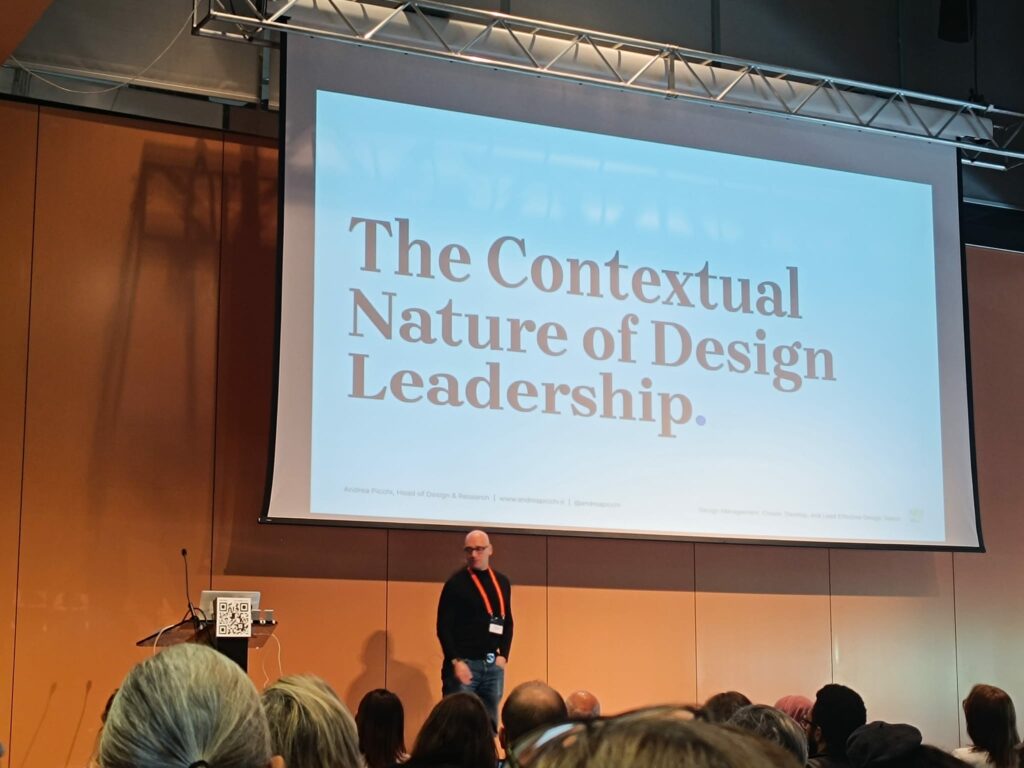
Impulse #4:
Julien Vaniere from Sage shared insights in his talk, “Designing Systems at Large Scale.” He stressed the balance between full alignment and creative freedom when building a design system, highlighting that it’s not a one-size-fits-all solution. Julien underlined the importance of assessing resources, team composition, and priorities, as building trust within and for your company is a limited opportunity. Challenges in creating a design system for a large group include team composition, prioritization, and sustainability. He recommended establishing strong foundations, beginning with user needs, defining real principles, managing expectations, and applying Pareto’s law. The combination of these elements yields the value of a design system, considering OKRs (Objective Key Results) as well.
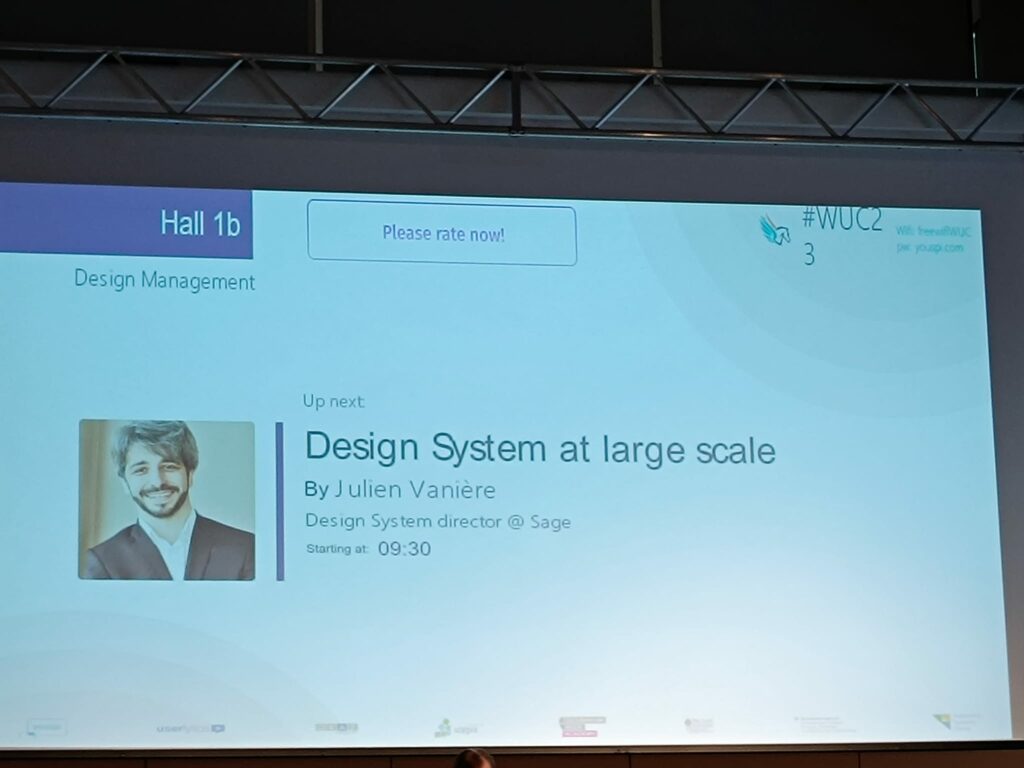
Impulse #5:
Peter Horvath from Whitespace delivered a talk on “The Principles of Systemic Design.” He introduced the concept of systemic design as an interdisciplinary and integrated approach to thinking and design. Mr. Horvath shared principles from the four orders of design, shedding light on what is that the core of the approach he is proposing on systemic design journey. He introduced us his twelves principles for systemic design. check the summary of those in the picture below.
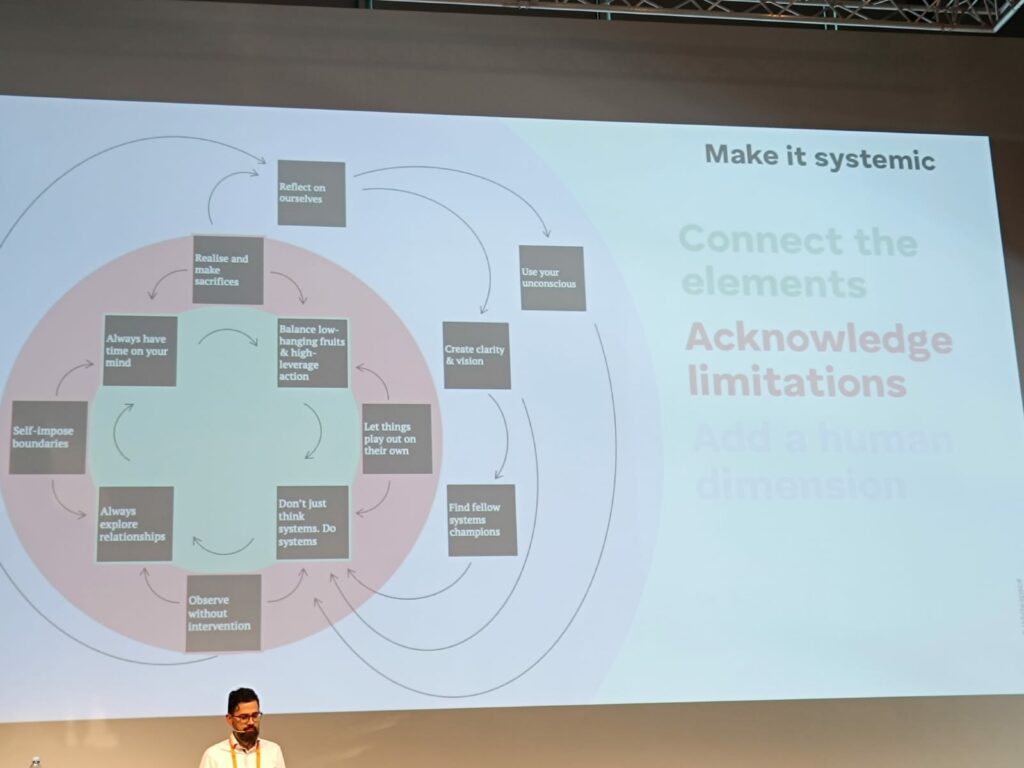
Impulse #6:
Sabine NB from Human Factors Research & Design presented her insights on “Delivering Design at Scale.” She showcased examples of failed companies that started with promising products, with the main takeaway being the importance of consistency. In her view, the lack of consistency is a significant reason behind the failure of many digital products. She emphasized that if standardization of human interface guidelines by tech is done right, product design can become more scalable. She proposed a model for delivering at scale and concluded by offering five metrics for successful scalability: consistency in design, disciplined execution, repeatable inventory, measurable outcomes, and limited changes.
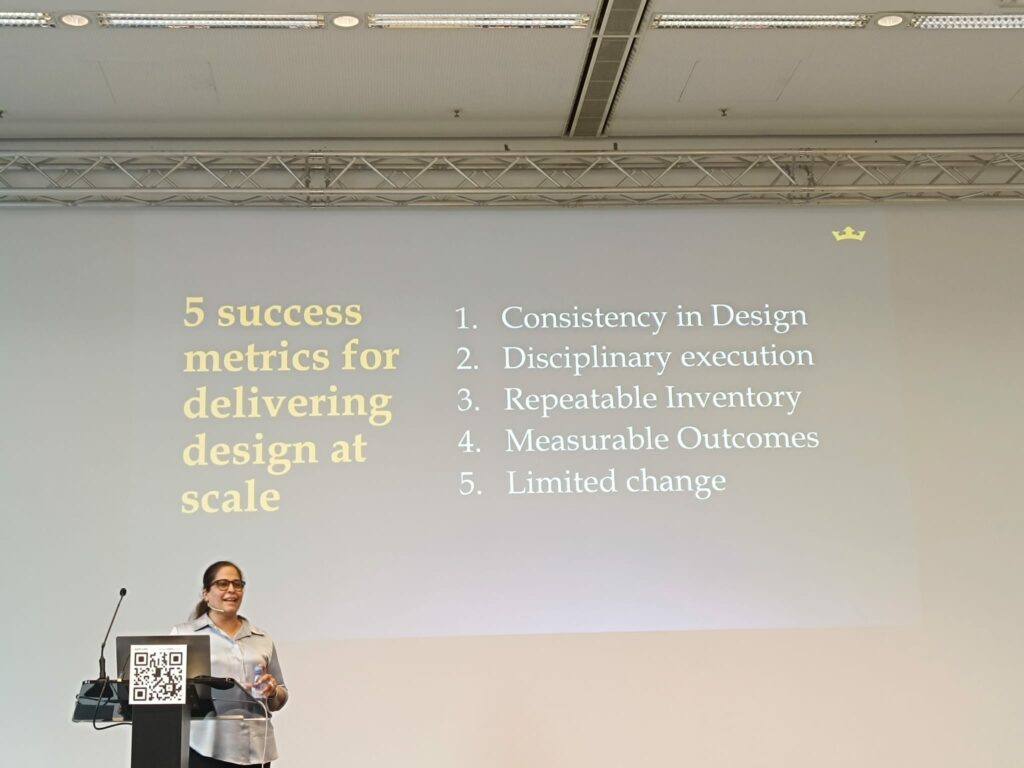
Impulse #7:
I also had the privilege of attending a talk by Riya Thosar from SAP, who explored the topic of “Leveraging Design Innovation for Business Success.” Her insights shed light on the potential of design innovation in driving business success.
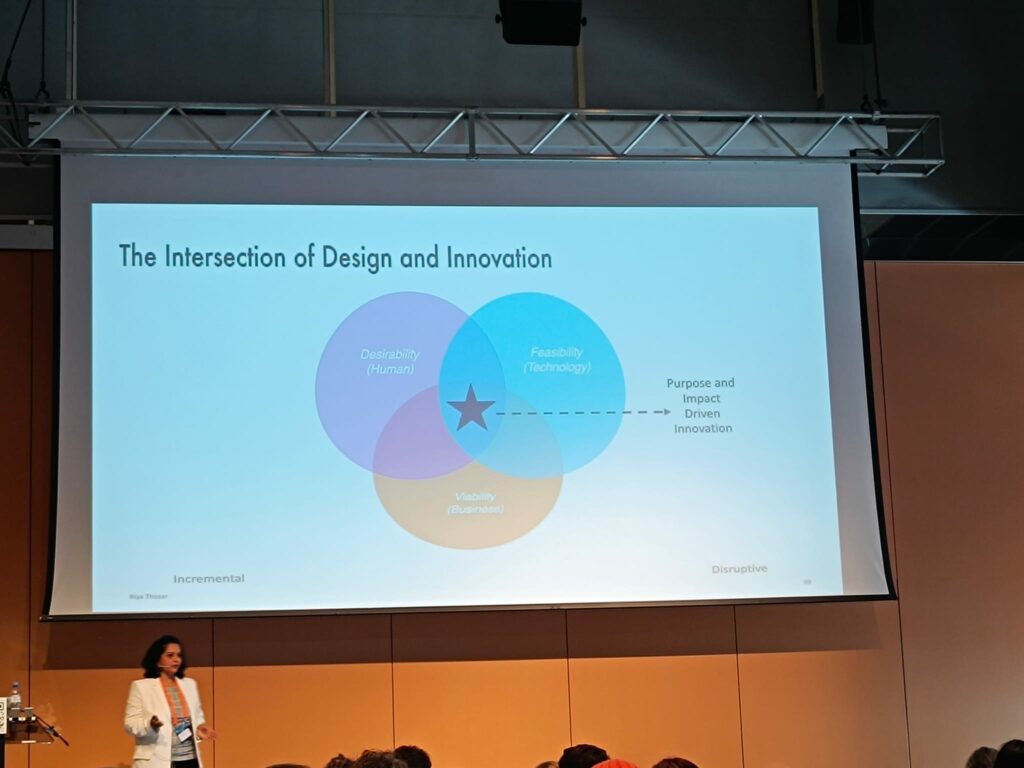
Lastly, Jaime Levy from Jaime Levy Consulting delivered a captivating keynote on “The Best and Worst Practices of the Discovery Phase.” Levy shared techniques for conducting effective interviews, workshops, prototyping, and critical thinking to enhance the discovery phase in the design process. Her presentation provided valuable insights into optimizing the early stages of product development.
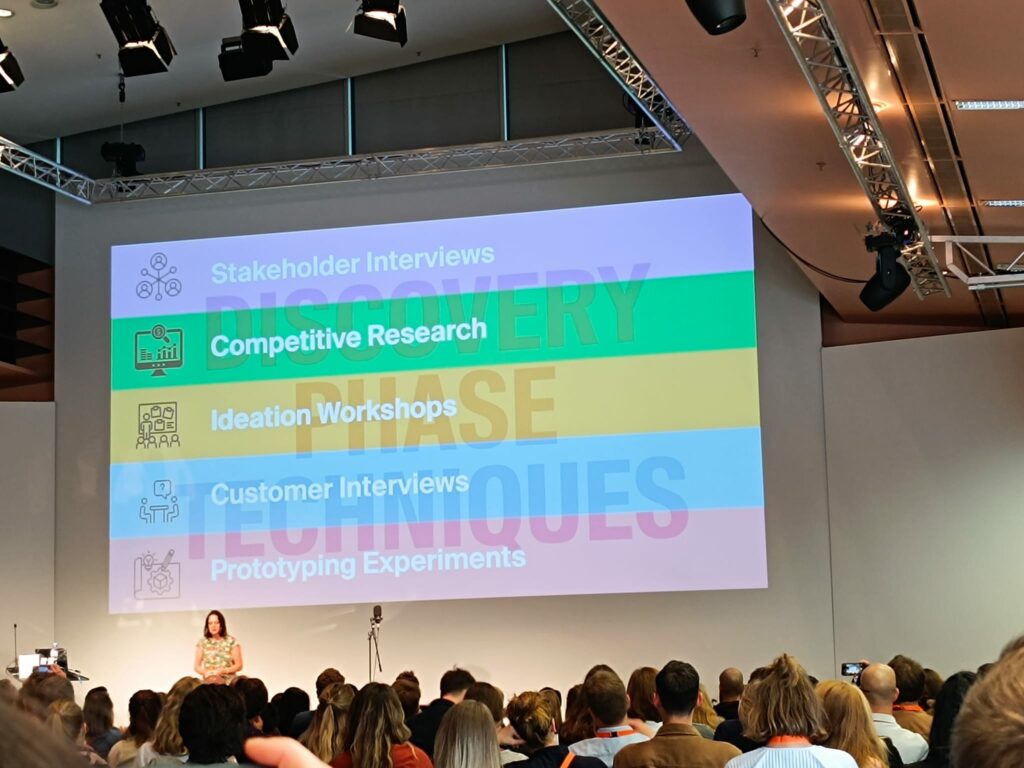
These talks and keynotes have not only broadened my perspective on design and research but also provided valuable insights for my ongoing work in developing a healthcare app for underserved rural communities. The emphasis on differentiation, systemic thinking, scalability, and the nuanced aspects of design leadership have offered great impulses and fresh approaches to tackle the unique challenges of this project. I’m excited to integrate these learnings into my work, ensuring that the app is not only user-centric but also stands out in a crowded digital landscape, making a real impact on healthcare accessibility for underserved communities.
